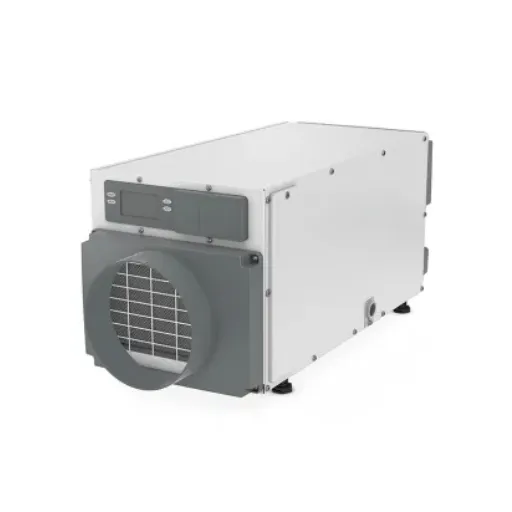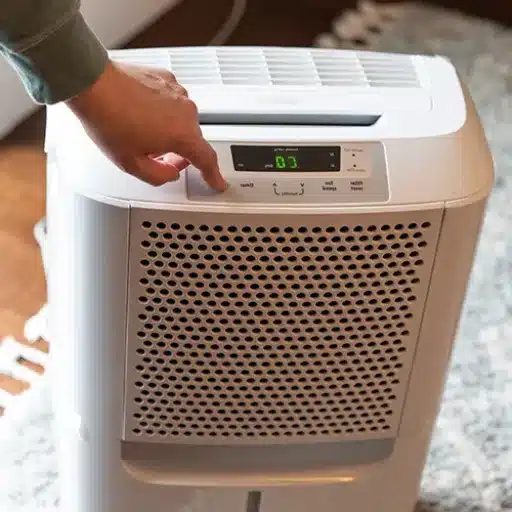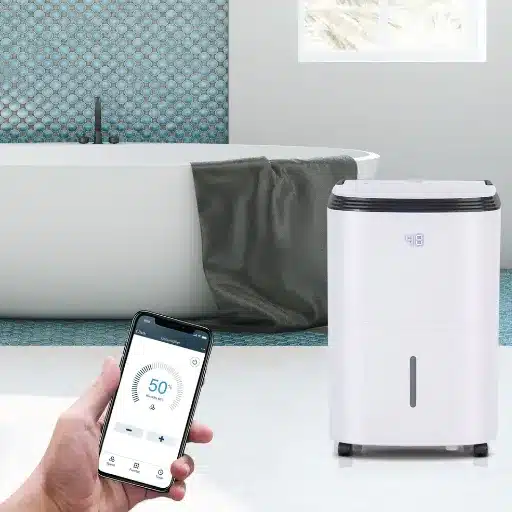What is a Rotary Dehumidifier?
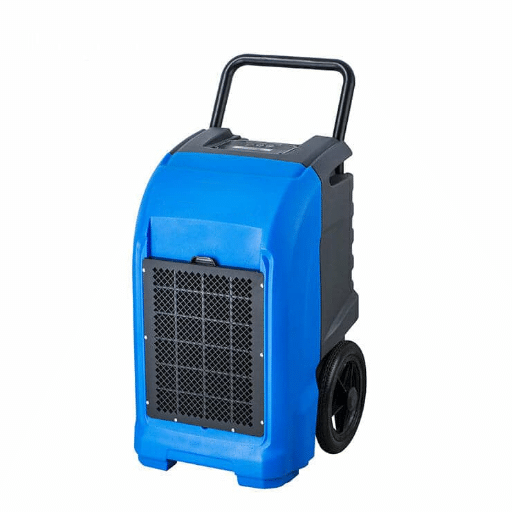
These rotary dehumidifiers serve to take charge of the humidity levels, suppressing an instance too high of a measure on the scale. The absorbent wheel captures moisture in the air as it passes through the mechanism, in effect drying the air. These systems find their greatest efficiency where low humidity is desired: industries, warehouses, and some residential areas. Rotary dehumidifiers are appreciated for their constant performance, energy efficiency, and capability to perform well in low-temperature environments, maintaining ideal humidity levels.
Definition and Functionality
Rotary dehumidifiers are dryers having a desiccant coating to absorb moisture in the air from a rotating wheel. This wheel keeps moving continuously with moist air passing through it and the water vapor is trapped before the release of dry air into the atmosphere. These systems are very much sought for high-precision humidity control, such as pharmaceutical manufacturing, food storage, archival preservation, and so forth. They can work with quite consistent performance even in cold weather where conventional refrigerant dehumidification systems will be at their weakest; this makes their application versatile in both commercial and specialized settings.
Comparison with Traditional Dehumidifiers
Desiccant dehumidifiers are really different from dew-point refrigerant-based dehumidifiers. Traditional methods rely on condensation; cooling the air to generate moisture. This becomes less effective in cool environments, though, since the capacity of the air to hold moisture diminishes with heat loss. On the other hand, desiccant dehumidifiers are better in such settings as the desiccant materials absorb moisture directly without much dependency on temperature differences.
Key Advantage: Other advantages of using desiccant dehumidifiers include allowing for much tighter control of target humidity levels, which is beneficial for highly controlled environments such as pharmaceutical manufacturing and archival preservation. The traditional dehumidifiers are better used in residential or general-purpose settings where extreme precision is usually not given much importance.
Key Components of a Rotary Dehumidifier
- Desiccant Rotor: Being the core unit of the rotary dehumidifier, this unit contains desiccants like silica gel or others that drain moisture from the incoming air. The rotor’s continued rotation allows for an alternation between drying and desiccant regeneration.
- Process Air Fan: This fan pulls in surrounding air and pushes it through the desiccant rotor to extract moisture from it. A good airflow and dehumidification process is maintained thanks to it.
- Regeneration Heater: Heating the rotor during regeneration, this heater frees absorbed moisture by evaporation, together with the moisture-laden air, thus allowing the desiccant to absorb moisture again.
- Regeneration Air Fan: This particular fan carries moist air away from the system during regeneration, thus keeping moist air from being recirculated back on the desiccant rotor, lowering its efficiency.
- Frame and Housing: These are the parts that house and support all components making insulation for energy efficiency.
- Filters: These filters are crucial in ensuring both process air and regeneration air remain dust-free, debris-free, or contamination-free that might affect system performance.
How Desiccant Technology Works
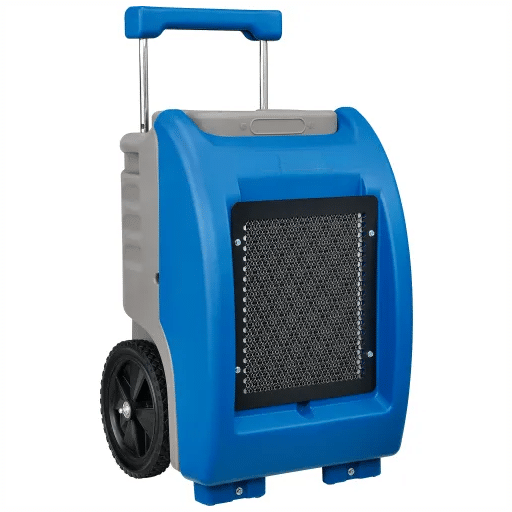
Desiccant very particular materials and having the unique properties to trap water vapor from the air. The process involves air passing through the desiccant, with moisture being absorbed or adsorbed-from-air, leaving behind just the dry air. Over time, the desiccant absorbs moisture and gets saturated-until it reaches that state of saturation; it requires regeneration of the desiccant. Regeneration means heating the desiccant to drive off the accumulated water vapor outside the system through regeneration air.
Advanced desiccant technologies combined with remarkable engineering and data analytics have been incorporated to further increase its efficiency. For example, the energy usage in these systems has been cut down through innovative designs that incorporate better thermal insulation and heat recovery systems. Apart from this, a digital monitoring system has been put in place, which, through the use of smart sensors and real-time data analysis, enables precise operations with timely maintenance.
Principles of Desiccant Materials
Desiccants shall operate on the principal of adsorption, wherein moisture from ambient air is trapped at the surface of these materials without any chemical change. Among other sorts of common desiccants are silica gel, molecular sieves, and activated alumina, all of which possess a porous structure having a large surface area for moisture absorption.
Advanced desiccant systems now combine the latest technologies, such as machine learning and IoT sensors, to monitor humidity trends in real-time so as to provide control which is accurate with less energy usage. This has not only propelled industries to ensure durability and performance of moisture-sensitive operations but also to choose green solutions that minimize wastage and consumption of resources.
Benefits of Using Desiccant Dehumidifiers
- Work excellently in low temperatures and low humidity conditions that could prove challenging to refrigerant-type dehumidifiers
- Support energy-saving technologies as part of sustainability initiatives
- Optimize operations using machine learning and IoT sensors, reducing energy consumption
- Protect against corrosion, mold growth, and spoilage in sensitive environments
- Safeguard the longevity and quality of products and materials in storage
- Cut down costs through waste reduction and lower risk of product losses
- Offer flexibility for customization across various industries
Common Types of Desiccants Used
| Desiccant Type | Key Characteristics | Common Applications |
|---|---|---|
| Silica Gel | Most common desiccant with highly porous consistency for effective moisture absorption | Packaging, electronics, pharmaceuticals |
| Activated Alumina | Known for highest surface area, effective in very high humidity situations | Drying air and gases, water treatment, oil refining |
| Calcium Chloride | Absorbs moisture very quickly even under high humidity conditions | Household and commercial dehumidifiers, construction industry |
| Clay Desiccants | Natural and eco-friendly, made from naturally occurring clay materials | Packaging for long-term storage |
| Zeolites | Crystalline substances with high thermal resistance | Industrial applications, refrigerators, air-conditioners |
Exploring the EDV-4000 Rotary Desiccant Dehumidifier
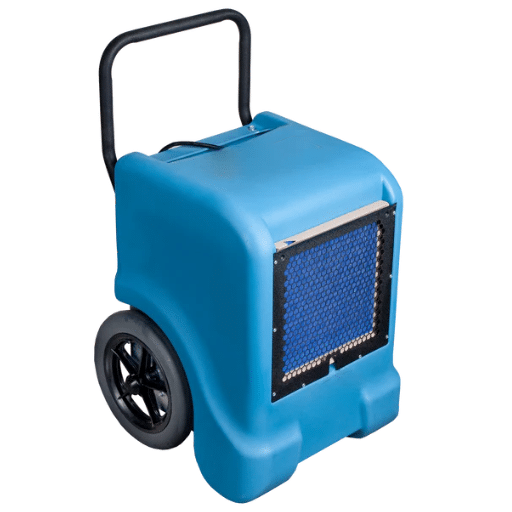
The EDV-4000 Rotary Desiccant Dehumidifier, a state-of-the-art moisture management solution, offers the finest performance for industrial and commercial applications of moisture control.
Key Features
- Superior Desiccant Rotor: High-performance desiccant rotor providing supreme moisture absorption in varying levels of humidity, ensuring stable operation even in extremely low-temperature situations
- High Moisture Removal Capacity: Capacity of drawing up to 80 liters of moisture per day depending on environmental conditions
- Energy-Efficient Design: Energy-saving motor and optimized airflow system minimizes power consumption
- Easy to Use Controls: Easy-to-operate control panel with adjustable humidity settings, real-time monitoring, and programmable modes
- Durable and Low Maintenance: Made from durable materials requiring less maintenance with respect to industrial environments
- Compact and Lightweight Design: Small and light enough to be moved and installed anywhere despite powerful features
Applications
The EDV-4000 is favored in industries requiring the control of humidity levels, including:
- Pharmaceuticals: To protect moisture-sensitive materials and equipment
- Food Storage: To keep product quality and deter mold growth
- Electronics Manufacturing: To protect fragile components from corrosion
- Construction Sites: To speed up the drying process and prevent moisture-dependent delays
Technical Specifications
| Specification | Value |
|---|---|
| Moisture Removal Rate | Maximum 80 liters/day |
| Operating Temperature | -4°F to 104°F (-20°C to 40°C) |
| Airflow Rate | 400 CMH |
| Power Consumption | Around 1.8 kW |
| Weight | 15 kg |
| Dimensions (L x W x H) | 23″ x 15″ x 14″ |
Performance in 1200 sq.ft Areas
This particular device excels in spaces of up to 1200 sq.ft. Whatever room or office area, or even if it’s a basement, the air flows at 400 CMH, thus maintaining efficient drying at optimal levels. The energy efficiency allows users to get the best output without worrying about energy costs. It is small and lightweight, hence easy to place anywhere within a 1200 sq.ft area for maximum efficiency covering every nook and cranny.
User Reviews and Experiences
For its reliability and energy efficiency for small to medium spaces, users appreciate the device. The reviews indicate that because of its very lightweight design, it is easy to transport and position strategically to give full coverage. Users also stress that the noise level of the device is minimal-to-nonexistent, a feature much appreciated in home and office environments. Users feel extremely satisfied with the ratio between cost and performance, meaning they feel that they really gained a lot from the investment.
Advantages of Rotary Desiccant Dehumidifiers
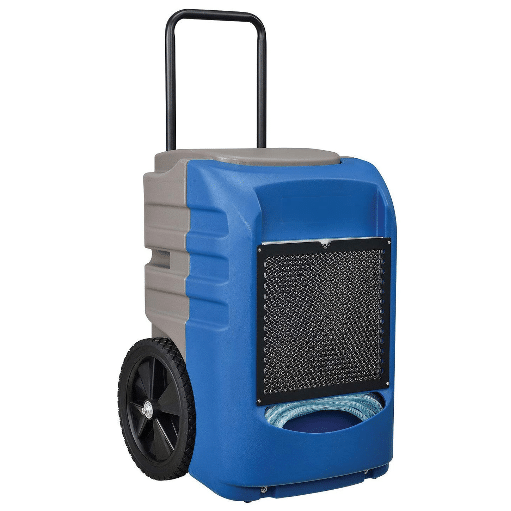
High Efficiency in Low Temperatures
Instead of the traditional refrigerant type, rotary desiccant dehumidifiers work excellently in low-temperature situations since the rotary dehumidifiers will extract moisture at temperatures as low as -4°F. Hence, such units are considered for the setting of basements, garages, or cold storage settings.
Compact and Lightweight Design
Portable dehumidifiers place the emphasis on being portable. Their small and light design enables easy installation and transportation so that people may carry them around conveniently to smaller or less accessible areas.
Quiet Operation
The rotatory mechanism produces a lower noise level, which offers the user pleasant tranquility. As such, these units are well-suited to settings where a low level of noise counts: home, office, or sleep.
Energy Efficiency
Rotary desiccant dehumidifiers use less power compared to some other dehumidifiers, giving them the title of cheaper alternative for long-term use with electricity bills kept down and performance optimal.
No Risk of Freezing
Rotary desiccant dehumidifiers never use refrigerant coils that could freeze in cold weather, unlike refrigerant types. Hence, they give uninterrupted performance while removing any need for defrosting facilities, thus becoming reliable in all climates.
Energy Efficiency and Sustainability
Combining energy efficiency with sustainability is crucial in confronting our modern environmental challenges and building low carbon footprints. Desiccant-type dehumidifiers with rotary action strongly support such ethos by minimizing energy usage and avoiding the use of harmful refrigerants present in some conventional types. This earns the favor among eco-friendly houses and businesses thanks to these improvements: increased savings over time and environmental preservation.
Humidity Control in Various Environments
Humidity control is crucial for maintaining comfort and safety levels in various situations. When it comes to homes, the control of humidity levels is beneficial since too much moisture or dryness could be a health hazard or damage furniture or structural elements. Likewise, commercial and industrial humidity controls are applied for operating equipment, air quality, and optimizing other intermediate processes like manufacturing and storage. Tech companies can make huge capital investments in state-of-the-art dehumidification systems to prevent humidity-induced failures of sensitive electronics.
Low Temperature Performance: The Never Frost Feature
- Prevention of Frost Build-Up: The Never Frost technology manages moisture levels to prevent frost from accumulating on any surfaces, working smoothly at temperatures as low as -22°F (-30°C)
- Increased Energy Efficiency: Since frost formation is prevented, systems utilizing the Never Frost defrost less often, saving a lot of energy in the long run
- Prolonged Equipment Life Span: Prevention of frost actually extends the life of the equipment since it decreases stress and potential damage to components
- Performance Stability at Sub-Freezing Temperatures: Making the system operate with stable performance at extremely low temperatures is extremely important for cold storage, freezer, and industrial plants set up in colder climates
- Maintenance Down: Since there are no frost-related issues brought about by this feature, maintenance needs are drastically reduced, saving users time, labor, and operational costs
Maintenance and Care for Rotary Dehumidifiers
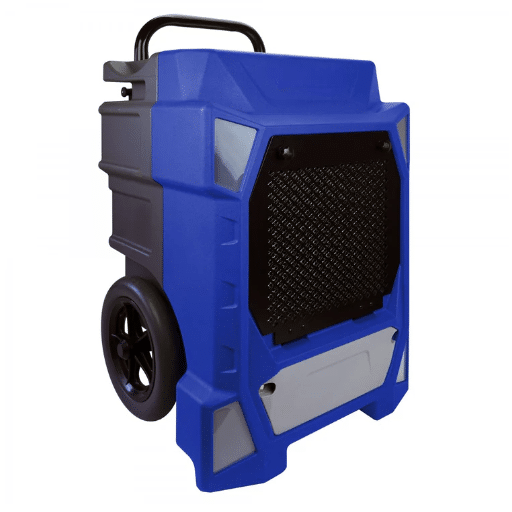
Maintenance for rotary dehumidifiers should be considered to maintain consistent performance and to extend their operational life. The rotor and the filter should be cleaned now and then to prevent dust accumulation that could affect airflow. Filters need to be checked every few weeks and replaced if necessary, depending on their frequency of use.
Routine Maintenance Practices
In regard to routine maintenance, when the standard procedures are faithfully carried out, they are a precondition for the long life span and efficient performance of any machinery. A very common question asked is: “How frequently should routine maintenance be performed?” Minor checking should be done monthly and full servicing annually. Secondly, a proactive approach monitoring early warning signs of wear or inefficiency will prevent minor problems from turning into expensive disruptions.
Key Maintenance Tips
- Lubricate moving parts according to manufacturer’s manual guidelines
- Inspect electrical connections periodically to ensure they are tight and working properly
- Check seals and mechanical parts at regular intervals to catch wear or damage early
- Schedule full professional service once a year for thorough cleaning and diagnostics
Handling the Drain Hose
Proper maintenance of the drain hose allows for efficient operation and prevents further problems from occurring. Expert advice suggests inspecting the drain hose every three to six months for signs of blockage, cracks, or leakage. To avoid clogging due to debris buildup, wash your drain hose regularly with warm water and a mild detergent. Look at its connections, making sure they are tight, and keep an eye out for any bends or kinks that would obstruct water flow and could give rise to drainage problems.
Troubleshooting Common Issues
Some common questions always come up while solving drainage issues. One of these would be: “Why is my washing machine not draining?” The causes are most likely a blockage in the drain hose, a faulty drainage pump, or a blockage in the drainage system. To check, first examine the drain hose thoroughly for any bends, kinks, or debris; else check the pump for any blockage or damage. Another thing to remember is cleaning the lint screen; when certain amounts of lint starve the water flow, the situation gets worse.
References
-
Technical Development of Rotary Desiccant Systems – University of Texas at Austin
A detailed study on rotary desiccant air conditioning systems, combining dehumidification and evaporative cooling.
Visit the site -
Comparative Analysis of New Desiccant Dehumidifiers – Harvard ADS
A study on the effectiveness of rotary desiccant dehumidifiers for air conditioning in high-humidity regions.
Visit the site
Frequently Asked Questions (FAQ)
What is a rotary desiccant dehumidifier?
A rotary desiccant dehumidifier utilizes an avant-garde rotary desiccant process to extract moisture from the ambient air. In contrast to the conventional compressor-type dehumidifiers that work by compressing gases, these dehumidifiers rely on a rotating desiccant substance that absorbs moisture from the air, thus working efficiently in a cool-temperature environment.
How does the edv-4000 rotary desiccant dehumidifier work?
The edv-4000 rotary desiccant dehumidifier dehumidifies by way of a rotating desiccant wheel that gathers moisture from the air. After the saturation of desiccant with water, it is heated to drive off the moisture, which is vented to the outside. Hence, without the use of any compressor, the unit dehumidifies rooms up to 1200 square feet.
What are the benefits of using a desiccant dehumidifier?
The eva-dry edv-4000 and desiccant dehumidifiers offer multiple advantages: the units provide efficient dehumidification without requiring a compressor; they operate quietly; the units maintain low humidity levels in various environmentally controlled settings; and they can be employed effectively at low temperatures and with high water catch basin capacities.
How much moisture can a rotary dehumidifier remove?
Based on the model and environmental factors, the rotary dehumidifier can take out up to 10 pints of water in a day. A case in point is edv-4000; it’s engineered to dehumidify an area very well, simultaneously and efficiently pulling moisture, an essential step against mold and mildew generation.
What is the power of a semiconductor dehumidifier?
The power of a semiconductor dehumidifier is defined in terms of how many pints of water it is capable of drawing from the air in a day. Unlike the rotary desiccant models, semiconductor dryers generally operate silently by exploiting the Peltier effect and are, therefore, good for use in rather small spaces.
Can I use a rotary dehumidifier in the basement?
Yes, a rotary dehumidifier is well suited for use in basements. It removes the humidity that might lead to the buildup of mold and mildew and will work against moisture challenges unique to that sort of moisture. These rotary dehumidifiers at a功rate out-of-the-box dehumidify spaces up to 1200 square feet, such as eva-dry edv-4000.
What exactly is the difference between rotary and conventional compressor dehumidifiers?
The fundamental difference between rotary and conventional compressor dehumidifiers is in their operating mechanism. Rotary dehumidifier units use desiccant materials to draw moisture on, whereas compressor dehumidifiers operate with a refrigerant cycle. The rotary units are silent and can function efficiently in low-temperature environments, thus gearing towards various other environments.
Are there maintenance requirements for rotary dehumidifiers?
Generally, rotary dehumidifiers require less maintenance as compared to others. Some may even come with water catch basins that need only emptying from time to time, and the desiccant material perhaps may not need replacement for a long period, all depending on its usage and environmental conditions.
How do I install a drain hose on my dehumidifier?
When installing a drain hose to your dehumidifier, do ensure to connect one end of the hose to the drainage outlet on the drain of the unit. The other end of the hose should lead to the drainage point that will allow water to flow all the time, so there is no need to manually empty the water catch basin.

